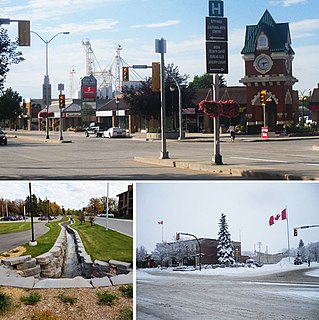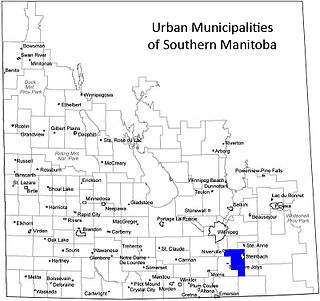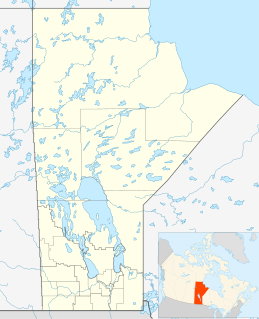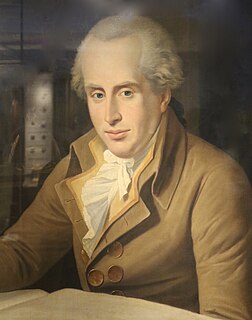Related Research Articles

Thomaston is a town in Litchfield County, Connecticut, United States. The population was 7,887 at the 2010 census, up from 7,503 at the 2000 census. The urban center of the town is the Thomaston census-designated place, with a population of 1,910 at the 2010 census.

A cuckoo clock is typically a pendulum-regulated clock that strikes the hours with a sound like a common cuckoo's call and has an automated cuckoo bird that moves with each note. Some move their wings and open and close their beaks while leaning forwards, whereas others have only the bird's body leaning forward. The mechanism to produce the cuckoo call has been in use since the middle of the 18th century and has remained almost without variation.

The Worshipful Company of Clockmakers was established under a Royal Charter granted by King Charles I in 1631. It ranks sixty-first among the livery companies of the City of London, and comes under the jurisdiction of the Privy Council. The company established a library and its Museum in 1813, which is the oldest specific collection of clocks and watches worldwide. This is administered by the company's affiliated charity, the Clockmakers’ Charity, and is presently housed on the second floor of London's Science Museum. The modern aims of the company and its Museum are charitable and educational, in particular to promote and preserve clockmaking and watchmaking, which as of 2019 were added to the HCA Red List of Endangered Crafts.
The Christian Mennonite Conference, formerly known as the Chortitzer Mennonite Conference, is a small body of Mennonites in western Canada.

A clockmaker is an artisan who makes and/or repairs clocks. Since almost all clocks are now factory-made, most modern clockmakers only repair clocks. Modern clockmakers may be employed by jewellers, antique shops, and places devoted strictly to repairing clocks and watches. Clockmakers must be able to read blueprints and instructions for numerous types of clocks and time pieces that vary from antique clocks to modern time pieces in order to fix and make clocks or watches. The trade requires fine motor coordination as clockmakers must frequently work on devices with small gears and fine machinery.

The Russian Mennonites are a group of Mennonites who are descendants of Dutch Anabaptists who settled for about 250 years in West Prussia and established colonies in the Russian Empire beginning in 1789. Since the late 19th century, many of them have come to countries throughout the Western Hemisphere. The rest were forcibly relocated, so that very few of their descendants now live at the location of the original colonies. Russian Mennonites are traditionally multilingual with Plautdietsch as their first language and lingua franca. In 2014 there are several hundred thousand Russian Mennonites: about 200,000 in Germany, 100,000 in Mexico, 70,000 in Bolivia, 40,000 in Paraguay, 10,000 in Belize and tens of thousands in Canada and the US and a few thousand in Argentina, Uruguay, and Brazil.

Steinbach is a city located about 58 km south-east of Winnipeg, Manitoba, Canada. According to the Canada 2016 Census, Steinbach has a population of 15,829, making it the third-largest city in Manitoba and the largest community in the Eastman region. The city is bordered by the Rural Municipality of Hanover to the north, west, and south, and the Rural Municipality of La Broquerie to the east. Steinbach was first settled by Plautdietsch-speaking Mennonites from the Russian Empire in 1874, whose descendants continue to have a significant presence in the city today. Steinbach is found on the eastern edge of the Canadian Prairies, while Sandilands Provincial Forest is a short distance east of the city.

Hanover is a rural municipality in southeastern Manitoba, Canada, southeast of Winnipeg in Division No. 2. It is the fourth most populous municipality in Manitoba and most populous rural municipality in the province as of the Canada 2016 census.

Thomas Tompion (1639–1713) was an English clockmaker, watchmaker and mechanician who is still regarded to this day as the "Father of English Clockmaking". Tompion's work includes some of the most historic and important clocks and watches in the world, and can command very high prices whenever outstanding examples appear at auction. A plaque commemorates the house he shared on Fleet Street in London with his equally famous pupil and successor George Graham.
Michael Pearson (1936–2017) was an acknowledged expert on Kent clocks and clock-making. He was born in Kent, England and educated at Dartford Grammar School. He served National Service with the Intelligence Corps, following which he returned to the private sector, working in sales, marketing and advertising. During this period he became a keen collector of antiques, in particular clocks and early oak furniture. His family had been a notable family antique and antiquarian book dealing business in Covent Garden since 1860, and then in Pall Mall until 1929. Pearson resurrected the old family business, moving it to Canterbury, Kent, where he specialised in antique furniture and clocks.

Mitchell is an unincorporated community recognized as a local urban district located in the Rural Municipality of Hanover, Manitoba, Canada. It is located three kilometers west of Steinbach, Manitoba along Provincial Highway 52, and has a population of 2,279 as of 2016.
Benjamin Willard, Jr. was a U.S. clockmaker.

Mennonite Heritage Village is a museum in Steinbach, Manitoba, Canada telling the story of the Russian Mennonites in Canada. The museum contains both an open-air museum open seasonly, and an indoor building open year-round. Opened in 1967 and expanded significantly since then, it is a major tourist attraction in the area. Approximately 47,000 visitors visit the museum each year. The village features original Mennonite housebarns, churches, and other buildings, some of which date back to the 1800s. The indoor facility documents the history of Mennonites from their origins in the Netherlands and Switzerland and focuses on the Plautdietsch-speaking Russian Mennonites who came to Western Canada. Temporary exhibits, also open year-round, are held in the Gerhard Enns Gallery.

Benjamin Vulliamy, was a clockmaker responsible for building the Regulator Clock, which, between 1780 and 1884, was the official regulator of time in London.

Randolph, originally known as Chortitz, is a small community in the Rural Municipality of Hanover, Manitoba, Canada. The community has an estimated population of 70 and is located 1.6 kilometers north of Highway 52 on Provincial Road 206. Randolph is located within a half kilometer of the longitudinal center of Canada.
Charles Gretton was a prominent clock and watchmaker during the golden age of English clockmaking.
Abraham Dueck Penner was a businessman and politician from Steinbach, Manitoba, Canada, who was instrumental in transforming and modernizing the lifestyle of the conservative Kleine Gemeinde Mennonites of the region.
The Privilegium of 1873 is the original invitation from the Dominion of Canada to Mennonites living in the Russian Empire offering them land, military exemption, and private schools, among other privileges. Because of their pacifist beliefs, Mennonites were known to migrate to other countries in order to maintain their lifestyles. When migrating, they signed agreements with their host countries. These agreements were known as Privilegium or "Privileges." In 1873, twelve Mennonite delegates from southern Russia set out to North America to investigate new lands. Of the 12 delegates, four decided to accept Canada's offer of land in the newly formed province of Manitoba. David Klassen, Jacob Peters, Heinrich Wiebe, and Cornelius Toews signed the agreement with the Canadian government and beginning in 1874 and the years that followed, 21,000 Mennonites immigrated to this part of Canada, including the East Reserve as established in the original agreement and later other areas.

The East Reserve was a block settlement in Manitoba set aside by the Government of Canada exclusively for settlement by Russian Mennonite settlers in 1873. Most of the East Reserve's earliest settlers were from the Kleine Gemeinde or Bergthaler Mennonite churches.
Andrew Unger is a Canadian writer from Steinbach, Manitoba, best known for his Mennonite satire website The Daily Bonnet.
References
- ↑ "A line into the past". CBC News. Retrieved March 29, 2020.
- ↑ James O. Harms. The Mennonite Clockmakers and Prussia and Russia. Mennonite Historian XXXIV.
- ↑ Arthur Kroeger (2012). Kroeger Clocks. Mennonite Heritage Village.
- ↑ "Werder Clock". Association of Manitoba Museums. Retrieved March 29, 2020.
- ↑ "Kroeger Clocks". Steinbach Online. March 27, 2013. Retrieved March 29, 2020.
- ↑ James W. Gibbs (February 1974). Religious Sect Clockmakers. National Association of Watch and Clock Collectors.
- ↑ "Once Upon a Time". Virtual Museum of Mennonite Clocks. Retrieved March 29, 2020.
- ↑ "2018 Exhibition". Virtual Museum of Mennonite Clocks. Retrieved March 29, 2020.
- ↑ "Goessel museum features Russian Mennonite Clocks and More". The Hutchinson News. Retrieved March 29, 2020.